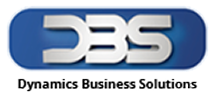Cloud payroll software has transformed the way businesses manage their compensation processes. Organizations report 92% better accessibility and operational flexibility after making the switch. HR departments now handle payroll operations in radically different ways. Recent studies show remarkable results. Companies that use cloud-based payroll systems cut their processing costs by 80%. Teams collaborate better, and the integration with other HR tools cuts errors by 30% while boosting efficiency. Cloud payroll solutions prove highly adaptable – 73% of companies reduce their administrative costs by 25% as their teams grow.
The year 2025 marks a turning point for cloud-based HR and payroll software adoption. Let’s explore what makes these systems so powerful, their advantages for HR teams, and the steps to assess and implement them successfully in your organization.
The shift to cloud-based HR and payroll software
Companies have moved away from traditional on-premise HR systems since 2020. Recent surveys show that 46% of companies worldwide use HR Software-as-a-Service (SaaS) or hybrid solutions. This number jumped from just 20% two years ago. Companies will continue this change, and 57% of organizations plan to adopt subscription-based SaaS or hybrid solutions by 2023.
Why 2025 is a turning point for HR tech
Companies will see big returns on their cloud investments by 2025. Cloud platforms already show promising results – 64% of companies report measurable business value from HR SaaS platforms, up 50% since 2019. The numbers look even better on the financial side. About 70% of organizations save 10% or more in costs, and 37% save more than 20%. Cloud-based HR solutions now make up about 55% of the market share. These expandable solutions with lower upfront costs have taken over traditional on-premises systems.
The rise of remote and hybrid workforces
Seven out of ten organizations expect more than 20% of their staff to work remotely beyond 2022. McKinsey’s survey reveals that 9 out of 10 organizations plan to mix remote and on-site working in the future. This change brings unique payroll challenges. About 40% of workers aren’t traditional full-time employees – they’re contractors, part-time workers, or consultants. Cloud-based payroll systems help manage this complex mix of workers.
Need for real-time, mobile-friendly systems
Teams spread across locations need quick access to payroll information. Cloud payroll software makes shared access to critical data possible through secure web portals or mobile apps. Workers no longer need to visit offices or submit manual forms. These platforms come with:
- Mobile time tracking with GPS capabilities
- Employee self-service options to access pay stubs and update personal information
- Immediate data processing to make quick financial decisions
- Integration with other essential business tools
The pandemic has changed HR’s focus toward data-driven decision-making. Nearly 40% of organizations report success in encouraging a data-driven culture in HR. Cloud-based payroll solutions support this trend with their complete analytics capabilities.
Key features driving the switch to cloud payroll
Cloud payroll software now comes with advanced features that meet modern workforce requirements. Companies moving to these platforms find four capabilities that make them particularly attractive.
Time and attendance tracking integration
Cloud-based payroll systems shine when they connect seamlessly with time tracking tools. These systems automatically sync employee hours from attendance platforms into payroll processing and eliminate manual data entry errors. To cite an instance, many solutions let employees clock in and out with facial recognition on any iOS or Android device. Location tracking can verify where mobile employees record their punches, and companies can set up virtual boundaries around work areas. A single platform now houses all employee data, which reduces the workload of HR teams who no longer need to update multiple systems.
Live updates and automated calculations
Real-time processing in cloud payroll solutions revolutionizes compensation management. The systems calculate payroll right away when changes happen and update tax rates, thresholds, and schedules as regulations change. Many platforms automatically calculate rolled-up holiday pay, backpay adjustments, earnings, and pro-ration. Employees can see their earnings accumulate in real-time, which promotes better financial planning and transparency. Companies can now make strategic decisions faster instead of just reacting to changes.
Employee classification and compliance tools
Different worker types create major compliance challenges. Cloud-based payroll systems include tools that categorize employees based on their work hours, responsibilities, and duration. These categories determine who gets what compensation, benefits, and perks. The platforms standardize processes globally, while local teams provide direct knowledge of international compliance requirements. Robotic data validation flags incorrect information immediately and helps prevent compliance issues.
Flexible payment options for all worker types
Modern workers just need flexible ways to get paid. Cloud payroll software supports multiple payment methods including direct deposits and payroll cards that work like debit cards. Employees can even access their earned wages before payday. These systems support Same-Day ACH and Real-Time Payments when faster processing becomes necessary. Companies that offer these options show their steadfast dedication to employee financial wellbeing, which improves morale and retention.
Benefits of cloud payroll for HR teams
HR teams that adopt cloud payroll software see dramatic improvements in their daily operations and long-term results. The advantages go way beyond moving processes online and create real changes in payroll management.
Reduced administrative workload
Cloud-based payroll systems reshape how HR teams handle their workload by automating routine tasks that once took countless hours. Staff members can submit evidence, verify documents online, and handle routine questions through self-service portals without HR support. This shift of tasks to employees might seem small at first, but research shows a 25% drop in administrative costs. The core team now has time to focus on strategic work like hiring and staff involvement instead of drowning in spreadsheets.
Improved accuracy and fewer payroll errors
Cloud payroll solutions excel at accuracy. These systems use precise algorithms that boost accuracy when calculating wages, taxes, and deductions. Companies using integrated payroll tools see over 30% fewer errors. Automated tax updates and calculations replace manual processing, while connected systems eliminate data gaps that caused past discrepancies.
Enhanced employee satisfaction through transparency
Cloud payroll systems make employees happier. Staff members get 24/7 access to their payslips, tax forms, and benefits information through self-service portals without asking HR. This openness builds trust – Gartner research reveals only 38% of employees know how their pay is determined, but companies that explain pay calculations see trust grow by 10%. Clear payroll processes reduce financial stress and create a more focused workforce.
Secure record keeping and audit readiness
Cloud payroll systems keep detailed audit trails and log every change to payroll data. This feature helps during audits by showing all changes had proper authorization. These platforms use bank-level encryption, automated backups, and compliance tracking that protect sensitive employee data while making regulatory compliance easier.
How to evaluate and implement cloud payroll solutions
You need a full picture of your current situation to implement cloud payroll software successfully. The right solution and smooth transition come from being organized and strategic.
Assessing your current payroll challenges
Your first step is to analyze existing payroll processes and find specific problems. Look for compliance risks, calculation errors, or integration failures that your current system doesn’t deal very well with. Outdated systems can’t keep up with new regulations, automation needs, and reporting requirements. Write down where manual work is needed now. These areas show where automation could improve efficiency by a lot.
Comparing vendors and requesting demos
Once you know what you need, start researching cloud-based payroll providers. Key factors to look at include:
- Technology compatibility (cloud vs. on-premise)
- Scalability to accelerate business growth
- Employee self-service capabilities
- Integration options with third-party applications
Start by shortlisting vendors with solid track records in compliance and customer support. Next, ask for interactive demos to assess user interfaces and functionality yourself. Make sure the solution has features like time tracking, HR onboarding compliance reporting, and tax filing options.
Ensuring compatibility with HR systems
Integration capabilities are vital for smooth operations. Your chosen cloud based payroll system should support two-way integrations with your existing HR infrastructure. Work with your IT team early in the migration project to plan necessary interfaces and data transfer protocols. This helps prevent technical issues during implementation and keeps data secure.
Planning for onboarding and training
A well-laid-out implementation plan should include complete training for everyone involved. Mix different learning approaches with interactive sessions, online modules, and user guides. Create an environment where employees can ask questions easily. Change management works best when HR, finance, and local payroll teams embrace the new system.
Conclusion
Cloud payroll software will reshape how HR teams work in 2025. This piece explores why businesses of all types now accept these solutions. The numbers tell a clear story – 92% of organizations see better accessibility, 80% lower processing costs, and 30% fewer errors after they make the switch.
The evidence shows cloud-based payroll systems offer real benefits beyond just saving money. HR teams can now spend less time on paperwork and focus more on growing the business. Staff members love having direct access to their information whenever they need it, from any location.
The system’s core features solve problems that old-school methods can’t handle well. Time tracking, automatic calculations, and compliance tools work together smoothly. These tools help companies manage their remote and hybrid teams with different employee types.
Your switch to cloud payroll needs careful planning. Success depends on evaluating current challenges, picking the right vendor, checking system compatibility, and training your team well.
Cloud payroll isn’t just new technology – it’s a smart investment in your company’s future. Your HR team will work more efficiently, employees will see their information clearly, and finance teams will love the audit-ready system that costs less.
Looking ahead to 2025, cloud payroll software isn’t just innovative anymore – it’s a must-have tool for companies that want to stay ahead. The real question isn’t if you should switch, but how soon you can start seeing these benefits.
Why Dynamo Payroll Is a Game-Changer for Modern HR Operations
In today’s fast-paced business environment, traditional payroll systems no longer meet the demands of dynamic HR operations. Modern cloud payroll systems like Dynamo Payroll — Cloud-Based Payroll, Human Resources, and Employee Self-Service Software for Microsoft Dynamics 365 Finance and Operations (FO) — have redefined how organizations manage payroll, human resources, and employee engagement.
Seamless Integration across Business Functions
One of the biggest advantages of Dynamo Payroll is its deep integration with Dynamics 365 FO. Unlike standalone systems, Dynamo Payroll connects payroll, HR, finance, and operations in one unified platform. This real-time data sharing eliminates manual data entry, reduces errors, and ensures your payroll data is always in sync with financial records. CFOs and HR leaders benefit from accurate, real-time insights that support better decision-making.
Automation That Saves Time and Reduces Errors
Dynamo Payroll automates the entire payroll cycle — from salary calculations and deductions to tax compliance and statutory reporting. This drastically reduces the administrative burden on HR teams, minimizes the risk of costly mistakes, and ensures timely, accurate payroll processing. Features like automated end-of-service benefits and gratuity calculations help businesses stay compliant with UAE and GCC labor laws, including WPS requirements.
Empowering Employees through Self-Service
Modern HR isn’t just about back-office efficiency — it’s about enhancing the employee experience. Dynamo Payroll includes a comprehensive Employee Self-Service (ESS) portal where staff can securely access payslips, submit leave requests, track attendance, and update personal information. This empowers employees, reduces HR queries, and fosters transparency within the organization.
Scalability and Security in the Cloud
Built on a secure cloud infrastructure, Dynamo Payroll offers the scalability needed for growing businesses and multi-entity enterprises. Whether you’re managing payroll for hundreds or thousands of employees across multiple countries, Dynamo Payroll ensures your data is safe with enterprise-grade security and compliance.
Why DynaPay Is a Game-Changer for Modern HR and Payroll in Dynamics 365 Business Central
For small and medium-sized enterprises (SMEs) looking to modernize HR and payroll operations, traditional manual processes or disconnected systems often create inefficiency, errors, and compliance risks. DynaPay — Human Resources & Payroll Solution for Microsoft Dynamics 365 Business Central (BC) — offers a smarter, cloud-based alternative that transforms how businesses manage payroll and HR in a single integrated platform.
Seamless Integration with Dynamics 365 Business Central
DynaPay is built specifically for Dynamics 365 Business Central, providing real-time data flow between HR, payroll, finance, and operations. This tight integration eliminates manual data entry, reduces errors, and ensures payroll transactions align perfectly with your financial records. Management gains instant access to accurate payroll costs, statutory obligations, and employee-related data — supporting better business decisions.
Automation That Simplifies Payroll and HR Tasks
DynaPay automates the entire payroll lifecycle — from salary calculations and benefits to WPS file generation and statutory reporting. The system handles leave entitlements, end-of-service benefits, gratuity, and local compliance rules, including those required by UAE and GCC regulations. This reduces administrative burden, ensures compliance, and improves accuracy, saving time for HR teams.
Enhancing Employee Engagement with Self-Service
Today’s employees expect transparency and control over their HR data. DynaPay includes an intuitive Employee Self-Service (ESS) portal where employees can view payslips, apply for leave, update personal information, and track attendance — anytime, anywhere. This reduces routine HR queries and boosts employee satisfaction.
Scalability, Flexibility, and Security in the Cloud
As a cloud-first solution, DynaPay offers flexibility and scalability that grows with your business. Whether you have 50 or 500 employees, DynaPay adapts to your needs while ensuring your data is protected by enterprise-grade security. Regular updates ensure your payroll processes stay aligned with the latest compliance requirements.
Dynamics Business Solutions (DBS) is certified Microsoft Dynamics partner in UAE, we take pride in our ability to develop and deploy the right business solution that matches global client’s requirements. DBS has developed in-house state of the art solutions for HR and Payroll, Dynamo and DynaPay on top of Microsoft Dynamics 365 FO and Business Central respectively. These solutions are catering the all business needs of HR and Payroll departments. We provide best services and support to our clients.
To know more, speak to our expert at Dubai: +971 4 447 5525 Jeddah: +966 508162072 or inbox us your query at info@dynamics.ae OR visit www.dynamics.ae
FAQs
Q1. What are the main advantages of switching to cloud payroll software?
Cloud payroll software offers improved accessibility, reduced processing costs, fewer errors, and enhanced employee satisfaction. It also provides real-time updates, automated calculations, and better compliance tools.
Q2. How does cloud payroll software benefit remote and hybrid workforces?
Cloud-based payroll systems enable instant access to payroll information from any location, support flexible payment options, and integrate time tracking with GPS capabilities. This makes it easier to manage diverse workforce arrangements.
Q3. Can cloud payroll software improve data security and compliance?
Yes, cloud payroll systems utilize bank-level encryption, automated backups, and compliance tracking. They also maintain comprehensive audit trails, simplifying regulatory compliance and protecting sensitive employee information.
Q4. What features should I look for when evaluating cloud payroll solutions?
Key features to consider include time and attendance tracking integration, live updates and automated calculations, employee classification tools, flexible payment options, and compatibility with existing HR systems.
Q5. How can organizations ensure a smooth transition to cloud payroll software?
To ensure a smooth transition, organizations should assess their current payroll challenges, compare vendors carefully, ensure system compatibility with existing HR infrastructure, and plan comprehensive training for all stakeholders.




